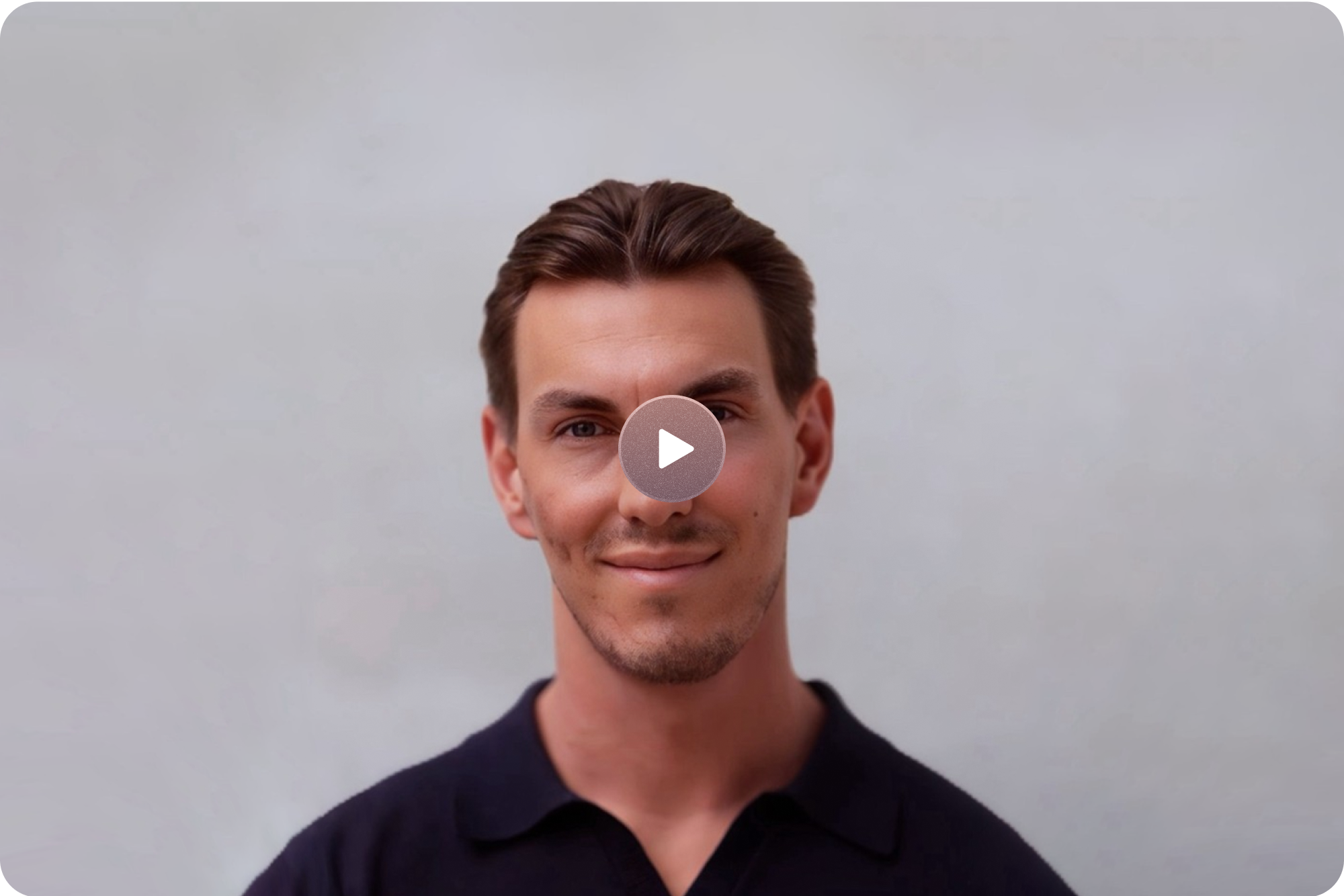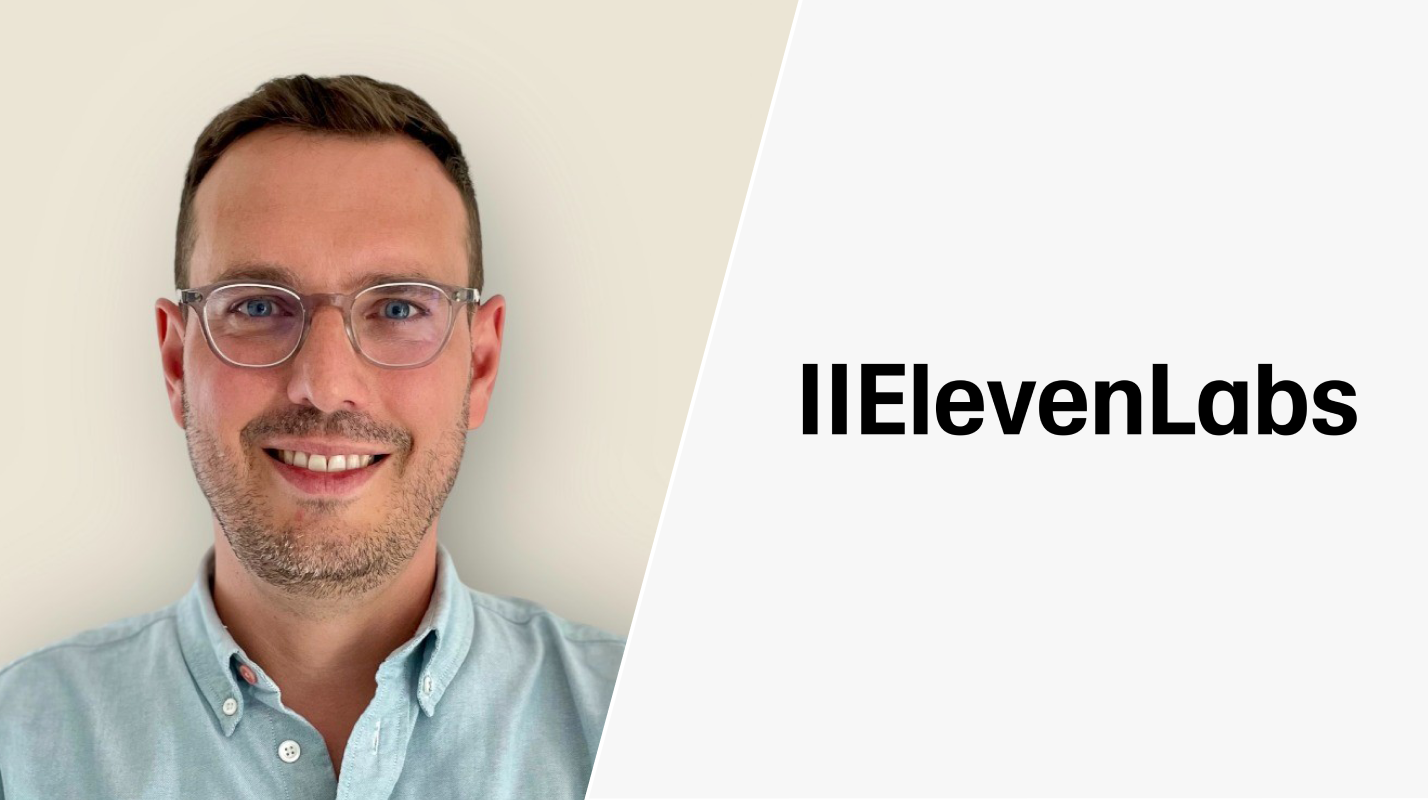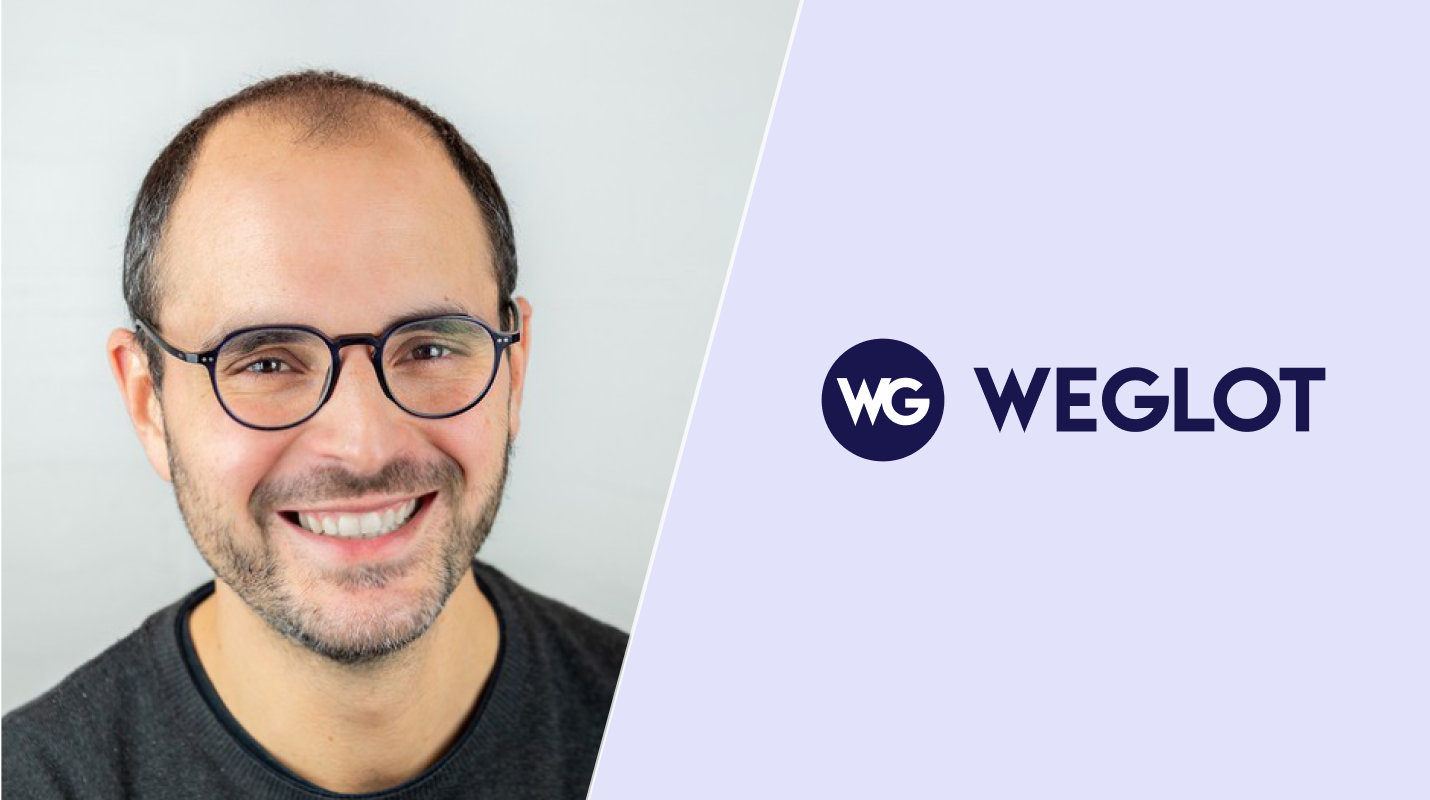


Anton Mack is a full-cycle AE at Spendesk for the German market. With a background in psychology and a strong track record launching SaaS solutions in DACH, he brings a unique blend of human insight and sales expertise to every deal.
A master of consultative, multi-channel outbound, Anton combines razor-sharp triggers, creative humor (even “boomer jokes” 🤝), and meticulous preparation to build trust and stand out. In this playbook, see exactly how he structures sequences, leverages real-time signals, and consistently lands outbound deals 3–4x larger than inbound.

Closed his largest outbound deal with a single, hyper-personalized email perfectly aligned with multiple triggers (funding, new execs, expansion).
The prospect’s reply: “We were going to call you tomorrow.”
Spendesk — an all-in-one spend management platform to control company spending, automate finance processes, and improve compliance.
ICP & persona:
- Mid-market companies (20–500+ employees), fast-growing, often post-funding.
- Decision-makers: CFOs, Heads of Finance, and in smaller teams, CEOs.
Average deal size & sales cycle:
- Inbound: ~$8–10K ARR vs Outbound: ~$30–50K ARR
- Average sales cycle: ~6 weeks.
Team structure & setup:
- 3 full-cycle AEs for the German market (5 for France, 6 for the UK, 1 for Spain)
- No strict segmentation; deals are assigned via round-robin.
KPIs
Main targets:
- ~€7–10K MRR per quarter per AE.
- 2–3 deals closed per month.
Key metrics tracked:
- ~2–3 qualified outbound meetings generated per week.
- 30–50 accounts targeted weekly.
- 6–12 touchpoints per persona (LinkedIn profile visit or voice note being considered as one touchpoint)
- 100–200 emails and 50–100 calls per week.
Performance benchmarks:
- Open rate: 30–50%.
- Reply rate: ~10%.
- Meetings booked directly from email: rare (~1%); most booked via phone follow-ups.
- Close rate (opportunity → won): ~40%
Anton’s outbound breakdown to reach his monthly goal:
Lead sourcing & qualification
Main lead sources & list-building:
- Accounts assigned by the Growth team via Salesforce reports (e.g., ~60 accounts recently).
- Self-sourced accounts through proactive research on LinkedIn, Google Alerts, funding announcements, M&A news, industry nominations (e.g., Sifted lists), and other market signals.

I don't just rely on the list from Growth — I really try to stay informed every single day, scanning news, looking at funding, checking if they’re hiring finance roles… I want to identify the key prospects before they even start looking. It’s like hunting for signals that others might miss.
Triggers & signals used:
- New CFO or finance leadership hires.
- Recent funding rounds or expansion into new markets (e.g., US or APAC growth).
- Headcount growth in finance teams or finance hiring spikes.
- Mergers & acquisitions or restructuring.
- Public awards or nominations indicating strong growth momentum.
- Increased focus on internal finance processes (ex: mentions in press or job listings).
“I have around 40 Google Alerts running — it helps me see daily updates about new CFOs, funding rounds, or anything that might be relevant for outreach.”
Qualification process:
- Uses Dust AI assistant daily to score accounts based on custom-trained signals and triggers.
- Dust analyzes external data (e.g., Google Alerts) and summarizes key events and context.
- Accounts are prioritized using Dust’s scoring (e.g., 13/15 priority score).
“Dust is basically an SDR working for me, summarizing all news and key points so I can act quickly and personalize.”
Lead data & accuracy:
- Contact info enriched via lemlist (phone & email).
- In Germany, GDPR concerns are common — prospects often ask where their data (especially phone numbers) came from. Rather than pushing back, Anton empathizes and even helps them remove or update public data, turning a common objection into a trust-building moment.
“The most common objection in Germany is ‘Where did you get this number?’ I often help them remove it or update it instead of pushing. It builds trust and can even lead to a meeting.”
- Anton personally verifies contact info, company context, and news before outreach to ensure hyper-relevant messaging.
- Uses Salesforce to track objections, competitor tools, and buying signals for future retargeting.
- Keeps detailed notes on objections and reasons for closed-lost deals to re-engage at the right moment when blockers are resolved.
Account ownership & research approach:
- Even though accounts are assigned by Growth, Anton treats ownership seriously — conducting in-depth research daily and continuously refreshing his book of business (~400 accounts).
- Identifies "priority" accounts and focuses extra efforts on multi-threading and gathering internal insights.
- Combines strategic signals with tactical research (e.g., LinkedIn activities, internal champions, connections across departments).
“I'm quite a greedy person; if I see an interesting account, I take it. But then I really dig deep to understand if it’s worth it.”

Outreach strategy & sequences
Channels used:
- LinkedIn (profile visits, connection requests, posts, voice notes)
- Email (highly personalized first touch, plus follow-ups)
- Cold calls (strategically timed based on signals and engagement)
“I wouldn’t go ahead and call people who haven’t opened any email, but rather those who've already seen and read something about me or Spendesk. It makes the call feel warmer and the conversation more open."
Typical sequence:

Anti-spam & deliverability:
- Custom, non-automated first email written with Dust AI support and manual adjustments.
- Uses lemlist’s AI tool to make every single email different, to avoid spam filters.
- Plans to implement alternative sending domains to protect the main domain reputation thanks to lemlist, though not fully rolled out yet.
Personalization approach:
- Prioritizes company strategy, recent initiatives, and strategic context over purely role-based pains.
- Often references funding events, market expansions, or executive changes as the main hook.
- Proactively reaches out to other employees (e.g., sales or non-finance roles) to gather insider information, such as whether they currently use a competitor’s solution, which he then leverages to tailor follow-up messaging and strengthen his narrative.
- Incorporates humor and unexpected cultural references (like jokes inspired by a well-known German comedian popular among his target audience) to break the ice, feel more human, and stand out in a skeptical market.
“I built around 10 agents in Dust so far. It’s not only about the first email, but also about finding different selling angles. I also have a Dust agent that’s just funny. For example, I stepped on a German comedian that is very much appreciated by a lot of boomers, the generation I typically deal with. So I try to send some cringy stuff that sticks with them. Very often, I don’t even think it’s funny, but I know they might think it’s funny.”
“It might sound bizarre, but using AI to prove that you’re a human being and stand out... If you can really stand out by being funny, having personality, being a bit edgy — especially on LinkedIn or other channels — it can help a lot.”
- Adapts language and style depending on German cultural context (more cautious, empathetic, less aggressive).
Use of AI:
- Dust AI to draft ultra-personalized first email variants and explore different narrative angles.
- Built specific Dust "agents" (e.g., for creating jokes, cultural references, different tone approaches).
- Uses Dust daily to refresh triggers and identify the most relevant company stories to include in outreach.
Unique strengths & differentiators
What makes Anton unique:
- Builds a strong personal LinkedIn brand to earn trust before outreach.
“When they visit my profile, they already know it's about Spendesk and see reviews from people I've helped. It gives me credibility before I even reach out.”
Uses bold humor and unexpected cultural references (like German "boomer" jokes) to break skepticism and stand out.
“If you can really stand out by being funny, having personality, being a bit edgy — especially on LinkedIn or other channels — it can help a lot.”
Goes beyond standard research by deeply understanding company strategy, market moves, and executive priorities.
Favorite tactics & habits:
- Creates a custom POV slide for each first meeting to show his understanding and challenge prospects’ assumptions.
- Multi-threads across different roles inside accounts to gather inside info (e.g., competitor tools in use) and build influence.
“I also start reaching out to other people in the company just to get feedback or insights… It's about creating different entry points and building trust step by step.”
- Play the long game: track objections, competitor tools, and closed-lost reasons carefully, then re-engage when timing is right.
"It makes sense to gather knowledge and stay consistent… When the blocker is gone, you can re-attack with the right message at the right time."
- Actively thinking about specialisation and tailoring outreach style to different personas, as he believes matching rep strengths to target personas or industries increases win rates.
What happened:
- The prospect had just raised a large funding round, expanded into the US, and hired a new CFO — a dream combination of triggers. Anton crafted a short, ultra-specific email with a subject line linking the funding round and scaling challenges.
“It started with a header, 'Congrats on the 56 million Series C + scaling financial operations.' When it comes to headers, I’m often trying to link two things with an 'and' or a 'plus' so that they think, okay, this applies to us and this applies to us — no one else.”
Why it worked:
- His email showcased deep understanding of their operational pain points during expansion and mentioned relevant clients for social proof.
Result:
- The email was so on point that the prospect replied, “We were going to call you tomorrow.
”This became Anton’s largest outbound opportunity to date at Spendesk.
“If you can really stand out by being funny, having personality, being a bit edgy — especially on LinkedIn or other channels — it can help a lot.”
Goes beyond standard research by deeply understanding company strategy, market moves, and executive priorities.
What happened:
- Anton spotted the Sifted list of the top 100 fastest-growing German companies. He identified that 10 of these were already Spendesk clients, which gave him strong social proof.
Why it worked:
- He congratulated prospects on their Sifted nomination and tied it to their likely finance scaling needs, then offered to connect them with peer companies already using Spendesk. This felt both exclusive and highly relevant.
“It was very easy for me to tell them, ‘Congrats on being nominated! We’re working with 10 of these companies — happy to connect you with them to see how we help.’ It felt exclusive and opened doors fast.”
Result:
- The campaign booked 3–4 meetings in one week, leading to new opportunities and deals now closing.
What happened:
- Anton targeted the parent company of an automotive client Spendesk was already working with. He combined outreach to the new Head of Finance with multi-threading other team members, including colleagues from daughter companies.
Why it worked:
- He used internal knowledge about their existing Spendesk implementation to create a strong expansion narrative. By gathering feedback from other employees, he could build influence and address internal blockers.
“I started reaching out to other members of the team, including colleagues from the daughter companies, to understand what they’re using today and what they think about Spendesk. That helped me build the case internally and get everyone aligned around the expansion project.”
Result:
- Sparked a project to expand Spendesk to additional entities and markets, turning a single-account win into a larger, strategic upsell.
Templates & resources
Hi [First Name],
Congrats on your impressive [Funding Round/Expansion]! As you scale [specific strategy], I imagine streamlining finance ops is top of mind.
We recently helped [Competitor/Similar Company] solve [specific challenge], and I think there’s strong overlap with your priorities.
Would you be open to a quick chat on how Spendesk can support this growth?
Best,
Anton

How to create an AI agent to generate jokes or references your prospects actually understand (age, country, job context)
- Here’s exactly how you could do the same for, say, CMOs at mid-market startups:
Step 1: Define your target audience’s "cultural code"
- Who are they? CMOs at mid-market SaaS startups (100–500 employees).
- Age range? Likely 30–45.
- What do they watch or read? Marketing memes, LinkedIn gurus (like Justin Welsh), pop culture references (e.g., "Barbieheimer," "The Office"), or startup clichés ("growth at all costs", "PLG vibes").
- Their daily struggles? Attribution nightmares, pipeline pressures, brand vs. performance fights.
Step 2: Build a custom GPT "humor agent"
Prompt to create your agent:
Step 3: Generate a joke or hook for outreach
Example output from your agent (for a first email):
Step 4: Drop it into your touchpoint
- Use it in a LinkedIn DM or connection request note.
- Use it as the opening line of your first email.
- Add it to a LinkedIn voice note ("Just had to say… loved the new campaign. Must've been like herding cats with confetti cannons, right?")
- ChatGPT custom instructions or custom GPT (like Anton does with Dust).
- Dust AI if you want advanced triggers + messaging generation.
- lemlist AI to further personalize and tweak for each prospect.

